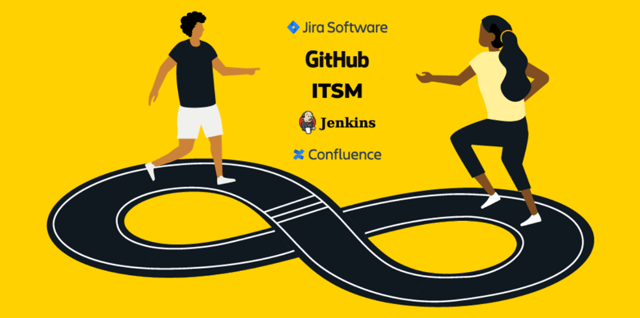Efficiency in software development is critical, and the challenges of slow and error-prone deployment processes are all too familiar. These issues not only impede the timely delivery of new features but introduce unnecessary risks.
Fortunately, there's a comprehensive solution at hand, implementing continuous integration and continuous delivery (CI/CD) pipelines using Jenkins, Jira Software, and GitHub and seamlessly integrating IT Service Management (ITSM) change management.
In this blog post, we’ll explore the challenges of traditional deployment processes, the benefits of this integrated solution, its typical use cases, and a happy scenario where everything is automated, including the release notes.
Challenges of traditional deployment processes
Before we dive into the solution, let's understand the pain points of traditional deployment processes:
- Lengthy deployment times: Manual steps in traditional deployments result in long and unpredictable deployment times, hindering responsiveness to market demands.
- Human errors: Manual interventions increase the likelihood of human errors, such as misconfigurations, leading to costly downtime and a poor user experience.
- Lack of visibility: Traditional deployments often lack transparency, making it challenging to track progress and identify bottlenecks promptly.
The comprehensive solution
To address these challenges and deliver a robust solution, consider the following approach:
- Automation with Jenkins: Jenkins, the trusted automation server, takes center stage in automating the entire software delivery process, eliminating manual intervention and reducing human errors. It seamlessly integrates with GitHub, making code integration effortless.
- Integrate Jira Software: Jira Software integrates seamlessly with Jenkins and GitHub, linking code changes to Jira issues. This integration ensures end-to-end visibility, from issue creation to code deployment, fostering collaboration between development and operations teams.
- ITSM change management integration: Implement robust integration with your ITSM change management system. This integration ensures that all deployments align with your organization's change management policies, mitigating risks and maintaining compliance. With this integration, you can say goodbye to traditional deployments where many manual steps had the risk of human error, resulting in unnecessary downtime.
- GitHub for version control: GitHub provides an efficient version control system, making it easier to manage code changes, collaborate with team members, and integrate seamlessly with Jenkins.
Benefits of the integrated solution
Now, let's explore the benefits of this comprehensive approach:
- Faster time-to-market: CI/CD pipelines with Jenkins, Jira Software, and GitHub accelerate the release cycle, enabling the rapid delivery of new features and updates.
- Reduced error rate: Automation reduces the risk of human errors, enhancing the reliability of your software.
- Enhanced collaboration: Integration with Jira Software promotes collaboration between development and operations teams, leading to smoother deployments and quicker issue resolution.
- Improved ITSM change management: Integration with ITSM change management ensures that all changes align with organizational policies, enhancing control and reducing risks.
- Business value through Enterprise Service Management (ESM): By streamlining deployments, this integrated approach aligns IT with the broader objectives of ESM, delivering value to the business by ensuring IT services are delivered efficiently and reliably.
The ultimate scenario: Automated release notes via Confluence
In our ideal scenario, the entire software delivery process is automated. When a successful deployment is made, automated release notes are generated and sent to end-users via Confluence, ensuring they are informed about the latest updates and improvements.
In software development, optimizing the deployment process is paramount. Traditional deployment methods are not only time-consuming but error-prone.
The implementation of CI/CD pipelines using Jenkins, Jira Software, GitHub, and seamless integration with ITSM change management offers a comprehensive solution, with benefits ranging from faster time-to-market to enhanced collaboration and alignment with ESM for broader business value.
By embracing this integrated approach, organizations can streamline their software development lifecycle, reduce errors, and deliver high-quality software efficiently.
With automation at its core, this solution not only ensures faster and error-free deployments but it keeps end-users informed about the latest enhancements through Confluence.
Welcome the future of software deployment with Jenkins, Jira Software, GitHub, and integrated ITSM, and watch your organization thrive in the digital age.
If you want to see how this can be done practically, watch the development management (DevOps) webinar.
Published: Oct 30, 2023
Updated: May 23, 2024


